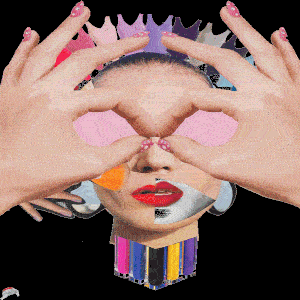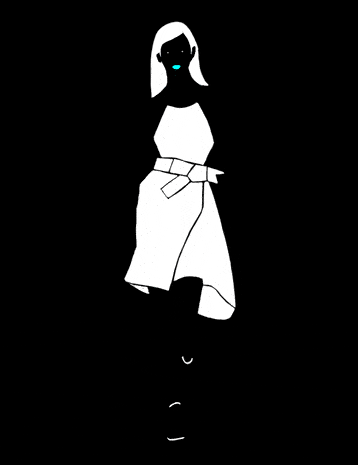Xtreme Vogue London Desk: Sarah Marshal
In early 1997, Princess Diana decided that she was ready to make some room in her closet. Reportedly in consultation with Prince William, she decided to auction off 79 of the cocktail and evening dresses she wore throughout her time as the Princess of Wales, with the proceeds to benefit the AIDS Crisis Trust and the Royal Marsden Hospital, where she served as president for eight years. One of the dresses on auction that day, a strapless gown in a regal purple velvet designed by couturier Victor Edelstein, was a particular favorite of Diana’s in the early 1990s. She even sat for a series of formal portraits in the gown, one of which still hangs in the foyer of the Royal Marsden today. After selling for $24,150 in 1997, the dress went up for auction Friday at Sotheby’s as a part of their “The One” sale, highlighting iconic objects from across human history. The dress went for $604,800, way ahead of the auction house’s $80,000 to $120,000 estimate before the sale.
According to Cynthia Houlton, a senior vice president and global head of fashion and accessories at Sotheby’s, the gown represents the fashion of the late 1980s, when it was designed, and the timeless qualities that Diana reached for in her wardrobe. “When you think of these very formal gowns, they do continue to come back,” she said. “This gown in some respects looks very similar to gowns that would’ve been worn 100 years ago, and there’s some version of this gown that’s exactly the same today.” She cited renewed enthusiasm for velvet on the runway, along with recent Alexander McQueen collections as an example of how the look is still relevant today.
Edelstein, a London-born designer who trained at the London branch of Dior before launching his own line in 1977, began dressing Diana early during her time in the royal family, including her pregnancy with William. He became known for outfitting women of the British establishment in looks that mixed society mores with modern flair, and in 1988, journalist Nicholas Coleridge said he had emerged as “the master of the English thoroughbred look.”
Edelstein’s designs for Diana fell outside of some of his more traditional work, in part because the pair formed an emotional connection. He told Colin McDowell that he tended not to pressure Diana with his own tastes, even though hers were very different. “She was so pushed around at the palace that I used to feel that I wasn’t going to push her around too,” Edelstein said.
Though he custom designed many gowns for Diana, including the iconic midnight blue dress she wore to dance with John Travolta on her 1985 visit to the White House, the purple velvet gown is from his Autumn 1989 runway collection. The collection was shown in July 1989, according to the Sunday Times, in a room where clients would “sit on spindly gold chairs under the opulent chandeliers of mirrored salons which are just as one would imagine.” The Harpers & Queen columnist who wrote a “Jennifer’s Diary” entry on the show didn’t mention the dress that would later belong to Diana, but she did mention a handful of “exceptional” and “cleverly designed” velvet suits and structured ball gowns.
In the summer of 1991, Diana wore the dress when she sat for her tenth official portrait, which was painted by Douglas Anderson. The painter later told Sally Bedell Smith that it was difficult for him to avoid capturing her “horrible sadness” during their five sessions. “She was on the verge of a nervous breakdown,” he said. “I painted what I saw.” When Harpers & Queen unveiled the painting in the May 1992 issue, writer Vicki Woods was satisfied by the dress and the cabochon amethysts set in diamonds, but unimpressed by the likeness. Perhaps picking up on the sadness, she wrote, “What on earth goes wrong between [Diana] and the finished canvas?” In hindsight, it’s not hard to guess that her relationship woes with then Prince Charles might have been weighing on her during the sitting; the pair would announce their separation in December 1992.
In 2001, Edelstein told journalist Sarah Bradford that he understood Diana’s personal struggles as he dressed her during the 1980s. “The essential basis of that tragedy was that she was in love with him when she married him,” Edelstein noted. As she pulled away from Charles, she began to express her autonomy through clothing. “She first started to become glamorous when her marriage began to go wrong.”
By the time she decided to sell her wardrobe in early 1997, she had taken on a new approach to dressing—incorporating more European designers and taking many fewer opportunities to wear spectacular ball gowns. But she did spend one more day playing dress-up in the old clothes. With photographer Mario Testino and writer Cathy Horyn, Diana posed for the July 1997 cover of Vanity Fair, where she revisited a number of the gowns she loved, including the purple velvet Edelstein.
“One glance at these photographs tells the story. The looks she throws at Mario are so warm and confidential they may be her most revealing statements since the divorce,” Horyn wrote, in a story titled “Diana Reborn.” “And considering that she had never posed for Mario before—didn’t know the fellow until she walked through the door—Diana must have felt extraordinarily free to express herself as openly as she did.”


